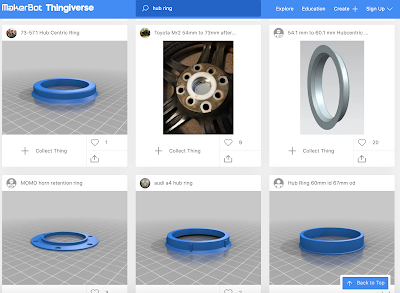Last year I purchased steel tire wheels for winter tires but they didn't fit my car exactly. Wheels have a center hole that fits over the hub of the car. Typically, this hole fits perfectly and allows you to quickly fit the wheel over the studs. This kind of wheel is called hubcentric and makes for a foolproof install.
Lugcentric wheels have the same holes for the wheel studs but the center hole is larger. Manufacturers can make a smaller number of varieties since one wheel design can fit a larger variety of cars. However, since the center hole is larger, it is trickier to line up the wheel studs in the direct center of the lug holes. A wheel that is not perfectly centered can cause vibration leading to steering instability and, potentially, loosening of the lug bolts.
Hub rings are spacers that you can use to fit over the hub that line up the center wheel hole so the lug studs fit in the exact center. They are typically made of plastic since they do not offer any structural integrity; they are merely used as placement spacers. This makes them ideal for 3D printing from home. Thingiverse offers many user designs:
